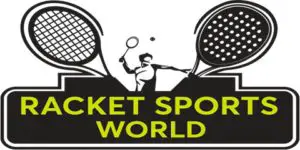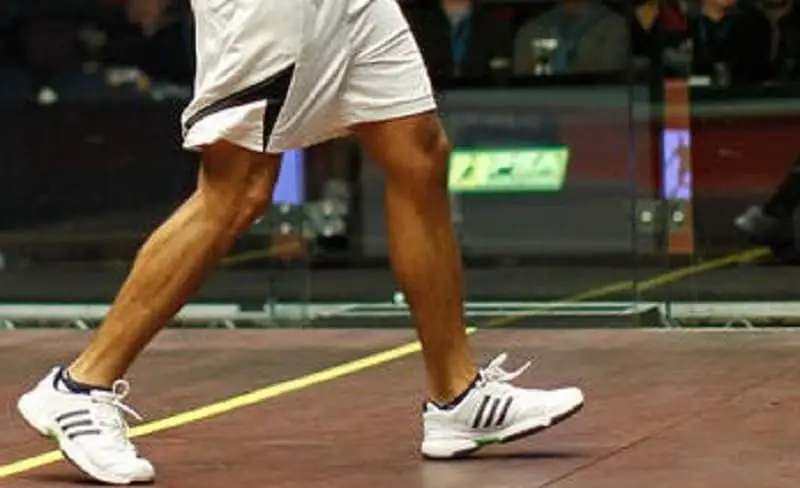We get a lot of questions from readers asking us how they should select the right kind of shoes for playing squash. This is an aspect of the sport that needs to be addressed because of its importance to a squash player and through this article we will give you some tips on how you to go about choosing the perfect shoes for this fast-paced sport.
Table of Content
Why are Squash Shoe Choices Important?
Unlike tennis, squash requires the players to play on hard wooden courts, and involves frequent high paced sprints and change of directions during a rally. Hence, everything from the sole of the shoe to the kind of cushioning provided as well as the durability is different.
Typically during a squash match, the toe nails suffer heavy stresses due to the constant movements, the lunging and rapid forward and sideward movements.
This period of intense load that the toes suffer from require that about half and inch of space is available at the front to relieve the nails of the stresses.
A lot of beginners however end up choosing shoes which are loose, so as to give their feet greater breathing space. Remember, this will cause your legs to become unstable and you risk tripping over your ankles when playing with such shoes on.
To be sure whether the shoe size is apt for you, put them on and try making the same movements as you would on the court.
This will give you an indication of whether they are best fit for you.
Try to look for shoes with greater ankle support – this will help reduce the risk of injury which a sport like squash always poses.
Another aspect that needs to be remembered is that the feet swell up or expand with increase in the temperature of the body.
Hence, the shoes are likely to feel tighter if you are undertaking the trial after a long walk or run.
Also Read:
Factors to Consider While Selecting Squash Shoes
So what are the factors to consider while looking for your ideal squash shoe? Here goes:
Sole
The squash shoes should be non-skid and non-marking. The idea being that they do not leave any marks on the court floor.
It is also good etiquette to not wear your squash shoes outdoors. If you wear your outdoor shoes to play squash, not only do you risk injury to yourself, but you also end up making the court more dangerous (and dirty) for the other players.
The gravel and mud will cause abrasion of the sole as well.
Shock Absorption
Look for shoes which have adequate shock absorption materials in the heel region. This will again prevent or delay the fatigue related injuries that your feet can suffer.
Weight
Striking a balance between the weight and durability is important. The lesser the weight, the faster you can move around the court – however the greater is the likelihood of the shoe wearing out faster.
Cushioning
Probably the most important element of the shoe. The ability of the shoe to absorb impact forces is vital to preventing fatigue in the joints.
For younger players the cushioning required may be lesser than those for the older players. If you have had a history of foot injuries, Achilles Heels etc. opt for a shoe which provides greater cushioning effect even at the cost of heavier weight and slower movement around the court.
Support Around the Ankles
This will depend upon how big or small your ankles are. Having shoes which are tight may not be best suited for those with bigger ankles.
However, if your ankles are smaller than normal then your shoes may end up becoming dangerously loose which can threaten the stability of your feet.
Some people are known to recommend wearing basketball shoes in case you have a history of ankle injuries. However, we wouldn’t want to give any such drastic advice.
Look for shoes with higher tops as compared to the standard shoes so that they can increase the amount of support available for the ankle.
Replacing the Squash Shoe
The question is how often should we replace our shoes as squash players? While this may not been easy on the wallet – you should consider changing your shoes every six months.
Depending on the intensity and regularity with which you have been playing, the cushioning that the shoes possesses will erode in due course of time.
As much as you may want to hold onto those faithful pair of shoes, it is suggested that you change to a new pair. A lot of us spend most of our money in buying the flashiest of squash apparel and racket, but very little on getting the right kind of shoes.
Majority of the injuries in the sport happen due to loss of stability, reduction in grip on the court, due to the incorrect footwear.
The knee troubles that can arise due to loss of the cushioning effect of the shoe is a well documented fact.
Also Read:
Squash Shoes We Recommend
Unless you are the legendary runner Abebe Bikila, you would never plan to run a marathon bare feet. Would you?
Similarly, buying the right kind of shoes should be an essential part of your preparation for playing squash – even more so that buying the correct racket.
Look at it as not an expenditure, but as an investment towards a fitter, injury free time on the court. There are a number of well-respected brands of sports good manufacturers who provide top quality squash shoes: adidas, ASICS, Babolat, HEAD, New Balance, Salming and Yonex.
Some of the shoes that we recommend are as follows:
ASICS Gel Rocket 9
Initially launched as indoor volleyball shoes, the Gel Rocket 9 have become ideal for squash as well. Light weight and providing good floor grip, this will be a good buy for beginners. However, it does have issues of being took rigid.
Providing good comfort and flexibility, the VIPER 3.0 is also known for its ankle support and traction. The grip and heel cushioning for the shoe has also received good reviews.
SALMING KOBRA 2.0
Even though rather expensive, the KOBRA 2.0 possesses a roll bar which reduces torsion effect and provides greater propulsion. The heel is also known to be able to capable of absorbing greater shock on landing.
HEAD Sonic 2000 Mid Court Shoes
This shoes is designed with an EVA midsole and a non-marking outsole. Made out of the rubber, the shoes is low to the ground. It not only has a hidden Heel stab system and a highly receptive heel foam but is also made of breathable air mesh to provide ventilation and comfort to the foot.


